Civic Engagement
Historically, people of color and indigenous communities (POCI), renters, and people from low-income backgrounds have been underrepresented in civic processes. This can be attributed to many factors including lack of free time and commitments to work, education, and family. One of the main causes for lower representation of POCI in these processes is the structure in which traditional civic engagement has been conducted, and the disenfranchisement of communities that continue to create obstacles and barriers for people to engage. Throughout the Minneapolis 2040 process civic engagement has been designed and conducted in a way to create equitable and innovative ways to engage populations that have been historically underrepresented in civic life. Such efforts includes dedicating time to building new relationships in order to create a more inclusive and equitable planning process to join communities that have already been at the table.
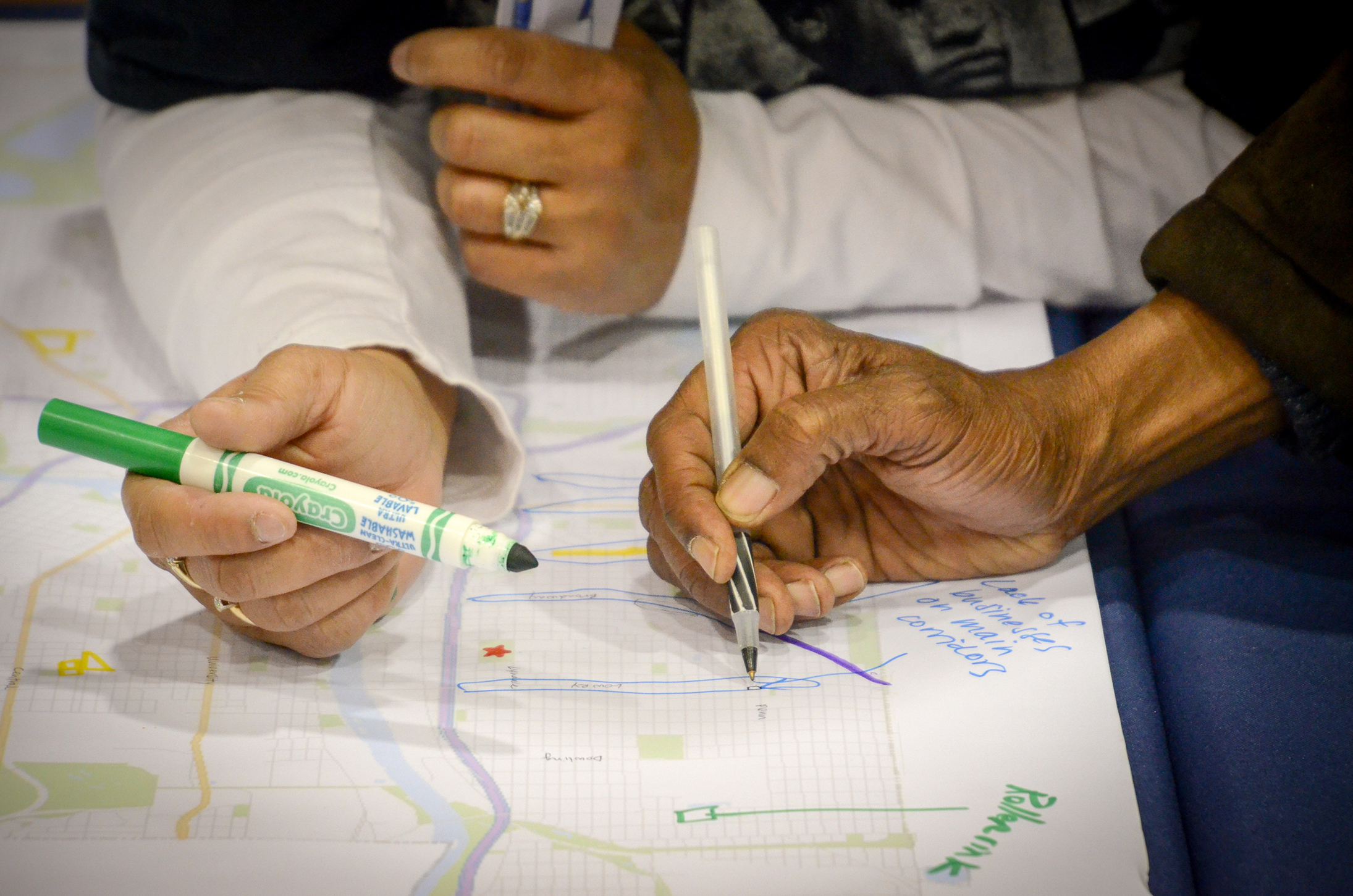
Introduction
Minneapolis 2040 is the city’s twenty-year Comprehensive Plan update. The Comprehensive Plan is an important citywide policy document that provides direction for Minneapolis’ built, economic, and natural environment into the future. The City of Minneapolis is required by state law to update the Comprehensive Plan every ten years according to regional planning requirements administered by the Metropolitan Council.
On April 1, 2016, the City Council directed the Department of Community Planning and Economic Development (CPED) to update the policies of the City’s Comprehensive Plan in service to the values of growth and vitality, equity and racial justice, health and resilience, livability and connectedness, economic competitiveness, and good government with a focus on guiding public and private investment in the built, natural, and economic environment.
What was the timeline of the process?
The comprehensive plan process was organized into five phases that are tied to the Topical Research Teams goals and methods of civic engagement, including gathering public and community feedback on various ideas and proposals that come to the surface as the project unfolded. The process started from early 2016 and lasts through 2018. The five phases are:

- Phase 1 - Launch
- Phase 2 - Big Questions
- Phase 3 - Policy Framework (Phase 3A and Phase 3B)
- Phase 4 - Policy Document
- Phase 5 - Review
The civic engagement process was a dynamic process which required participants, City of Minneapolis staff, and elected officials to learn, interact and engage through various mediums. Beyond the extensive effort, which engaged with the plan’s identified key audiences in meaningful dialogue on the direction of the city, City staff also gathered input from the Steering Committee, the City Planning Commission, relevant Boards and Commissions, the City Council, and the Mayor.
What is civic engagement and why is it important?
Civic engagement is a means for all people to bring their voices into the process and to share their own ideas, backgrounds, and experiences to plan for a future that benefits everyone. The people of Minneapolis assisted in the creation of Minneapolis 2040, and the final plan reflects that participation. As part of this process, the Civic Engagement Plan was created to recognize the complexity of engaging the Minneapolis community in a transparent and effective way to develop Minneapolis 2040. It contains goals that guided engagement, identified creative methods for engaging key audiences, established a timeline and phases for activation, and presented an outline of how the City has incorporated feedback from the public and key audiences into the City’s formal decision-making structure for when the Mayor and City Council are asked to approve the plan.
What are the engagement goals?

Civic engagement for Minneapolis 2040 featured opportunities for participants to learn and be informed, interact in the process, and provide meaningful feedback through large convenings, in-person interactions, technology, and creative tools. Each engagement method was evaluated based on engagement goals that were formulated from the Core Principles of Community Engagement, which were adopted by City Council in 2007. The City aimed to achieve these outcomes and objectives through the civic engagement process through:
Meaningful and Relevant Dialogue: The community feels that the dialogue has been meaningful and relevant to their interests and daily lives.
- Focus all materials, activities, and tools on specific topics.
- Use key audiences’ time efficiently and effectively.
- Connect topics to the work of the internal Topical Research Teams process of developing and updating City policies.
- Clearly define the expectations, goals and outcomes of every activity, especially in terms of how they relate to key audiences.
- Tell the story of how creating a vision of Minneapolis for the year 2040 connects to various key audiences.
- Follow-up by connecting people to resources.
Inclusive Representation: The perspectives and participation of a broad range of community members are equitably represented in the plan.
- Create a variety of options for key audiences to engage in the process.
- Share information through ethnic and community media venues.
- Market events, materials, and tools to different age groups.
- Meet people where they already gather and attend existing meetings.
- Facilitate discussions and develop materials with cultural sensitivity and eliminating biases in mind.
- Provide clear and comprehensive summaries of public input and share them through engagement activities, materials, and other tools.
- Create opportunities for different key audiences to understand each other’s various perspectives.
- Share case studies of different demographic groups in the city.
Access to Information and Opportunities: The public has the information they need to participate in ways that are appropriate to their experiences and lifestyles.
- Provide translation of activities and materials in appropriate languages and for people who are visually and hearing impaired.
- Provide childcare and transportation when feasible.
- Ensure meetings, events, and tools are ADA and transit accessible.
- Test methods and tools to confirm they are understandable and accessible to people from a range of cultural backgrounds and with a range of abilities.
- Be concise and use plain language at events and in materials and tools.
- Make engagement more accessible through visual examples (diagrams, charts, photographs) and develop tools that are accessible to people with a variety of learning styles and on a variety of levels.
- Incorporate the City’s standard language block into all public documents and information.
Contributions Have Impact: The public feels their input has been thoughtfully considered and sees their contributions reflected in the plan.
- Have face-to-face interactions.
- Report back on what we heard.
- Report back on how public input has influenced decisions that shape policies.
Empowering Experience: Community leadership and capacity has been built through the process.
- Build relationships with and between various communities through follow-up interactions.
- Engage diverse key audiences in speaking at and facilitating meetings and activities.
- Encourage key audiences to tell the visioning process and Comprehensive Plan story.
- Engage key audiences in reporting back to their communities.
Effectively-Used Resources: Government resources are used wisely and effectively.
- Use objectives, methods, and tools that make the most effective use of government resources.
- Develop methods than can be used in future planning processes beyond Minneapolis 2040.
Who has been engaged?
The civic engagement process was structured to be as inclusive as possible as City staff worked together with community members to shape the future. City staff identified key audiences that best meet the engagement goals and objectives of the Civic Engagement Plan. These were intended to be broad audience groups that would help focus engagement efforts, but would be as far-reaching as possible. However, the list is not exhaustive, and may not represent all interested people. These key audiences include, but are not limited to:
|
The general public Cultural organizations Recent immigrants Homeless population Accessibility population Residents Public agencies Business associations |
Property owners Youth and families Seniors Neighborhood organizations Developers and brokers Policy advocates Media outlets Social media users |
College students Institutions Small business owners Tourists and visitors |
Evaluating Approaches to Engagement - Informing, Interacting, and Feedback
One of the objectives throughout the engagement process was to have a variety of opportunities for engagement for all types of participants. This included opportunities to learn, interact with City staff and other participants, and provide input on key questions. Engagement methods were utilized based upon their ability to achieve at least one of these types of engagement:
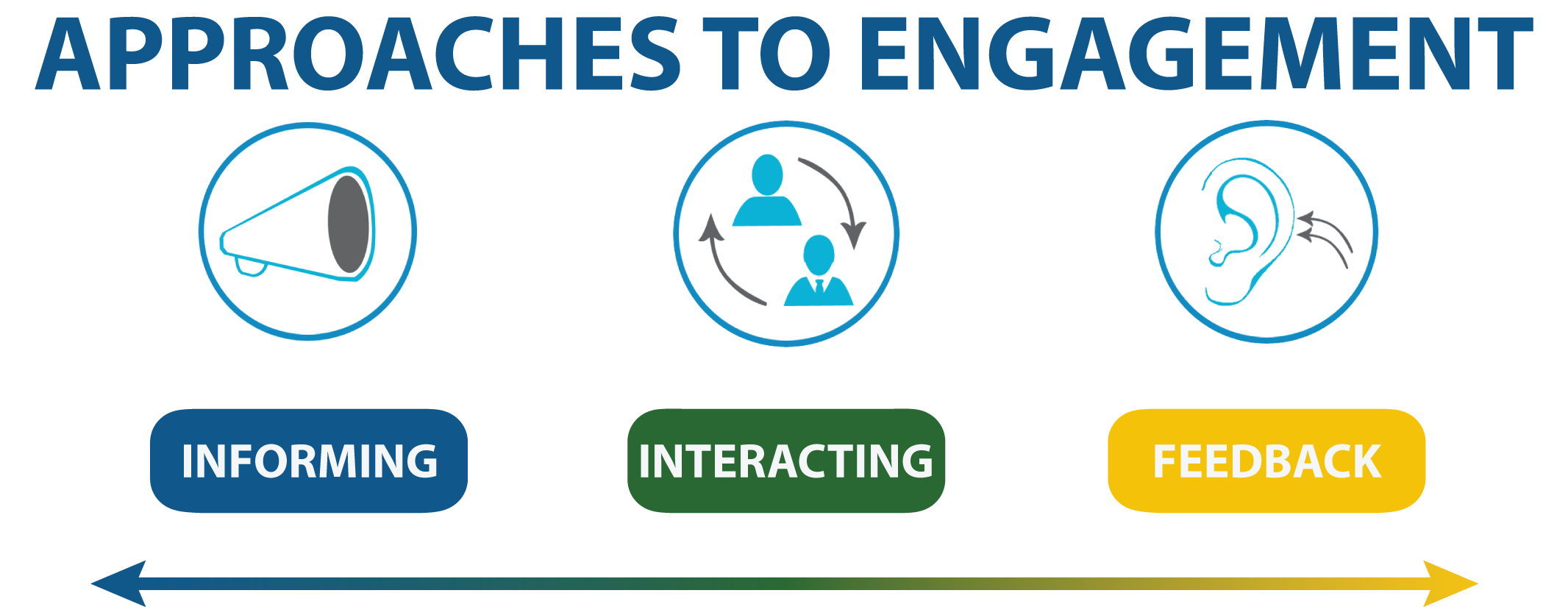
- Informing: Staff updates the community on the planning process and creates access to resources. Key audiences are informed on various topics early in the process to empower participants for more meaningful discussion and feedback for further engagement as policy topics are prioritized.
- Interacting: Engagement that facilitates an exchange of ideas between the City and the community. Engagement methods that are designed as a forum for participants to interact with each other and allows for learning from different experiences and perspectives. These types of interactions are prioritized as it allows the opportunity for dialogue and relationship building.
- Feedback: Community members share their thoughts and ideas with the City. Comments are collected through various engagement opportunities through written or drawn feedback at open houses, street festivals, and online interactions. All collected feedback are used as comments and are transcribed or documented.
How did engagement occur?
During each comprehensive planning phase the community had the opportunity to be involved in engaging with City staff, and each other, during a period of focused activities and other related opportunities. Each round of engagement included:
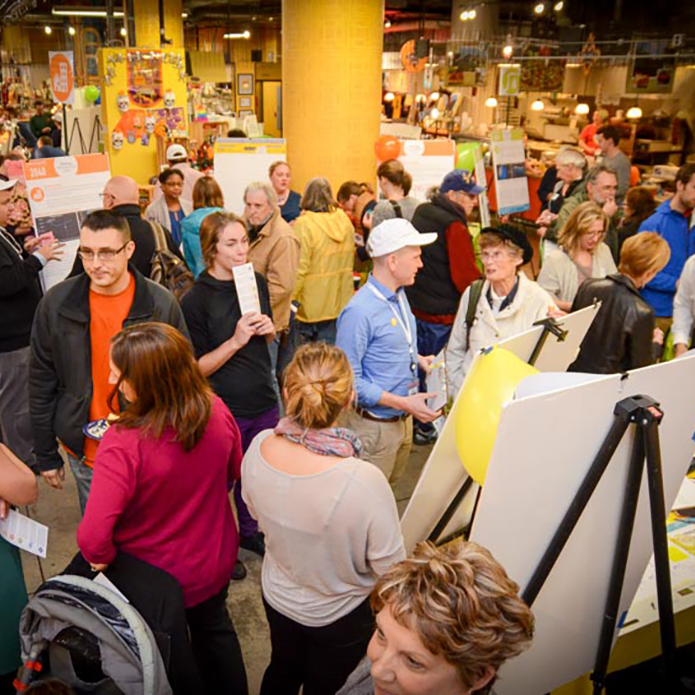
- Community Workshops – Community meetings and workshops were held during each phase of engagement, and were designed to be as inclusive as possible. This was done by hosting them in accessible locations next to public transit, offering food and refreshments, and having fun and family friendly activities with artist-designed engagement. This included activities and information that was accessible to different types of participants who wanted to engage for a couple minutes or dive deeper into a discussion. Interpreters were on hand at every meeting for limited-English speakers.

- Community Dialogues - Community Dialogues are facilitated conversations, supported by the Department of Neighborhood and Community Relations, between City departments and cultural communities as well as other under-represented groups. The dialogues take City staff outside of City buildings to meet various community leaders in places where communities are already meeting to talk about issues relevant to their daily lives. Staff returned to the communities in subsequent phases to report back on how their feedback were used in decisions-making, and brought City leaders to discuss relevant topical issues.
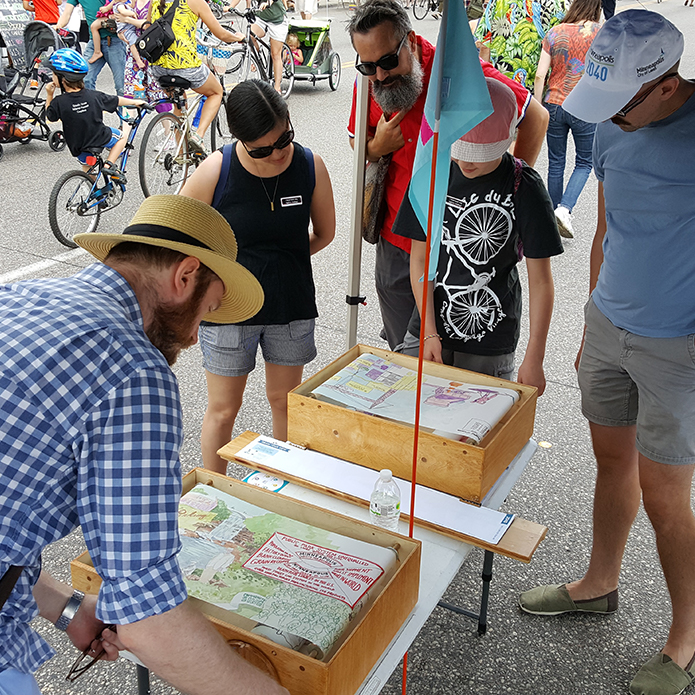
- Street Festivals – During the summer and fall months, vibrant festivals draw cultural communities, residents, business owners, visitors, and youth to destinations around the city. City staff engaged with community members at various events such as Open Streets Minneapolis, Juneteenth, Somali Independence Day Festival, and May Day where attendees visited various exhibits, and watched performances and small presentations in parks and on streets. Creative tools were activated such as Imagining Equity, the Minneapolis 2040 mobile engagement tool. Other activities include visually interactive boards which engaged participants, and responses were recorded on cards and documented through photos.
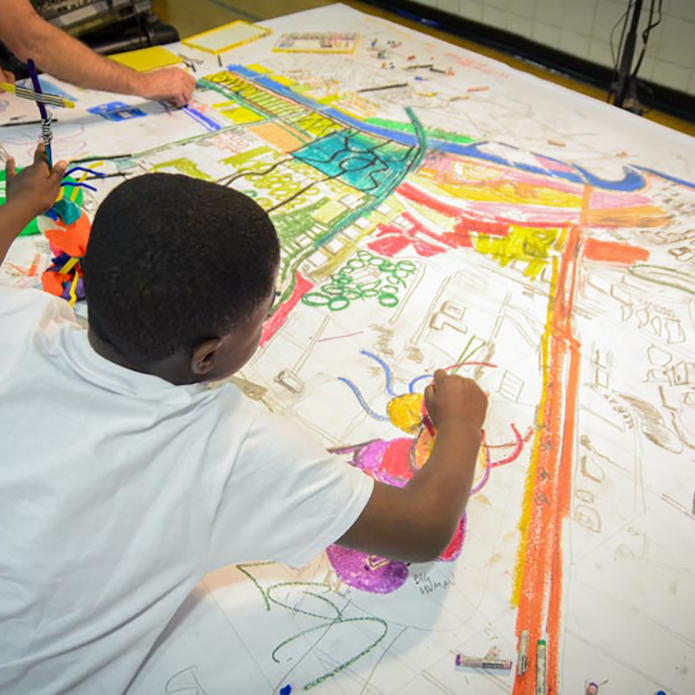
- Artist-designed Engagement – A collaborative process in which City staff worked together with artists to design creative engagement methods. Artists focused on designing tools that helped reached out to diverse populations, and helped build capacity through art in order to make planning fun and accessible. Examples of artist-designed engagement activities included: artist-designed open houses, Imagining Equity - mobile engagement tool, performances, and infographics.
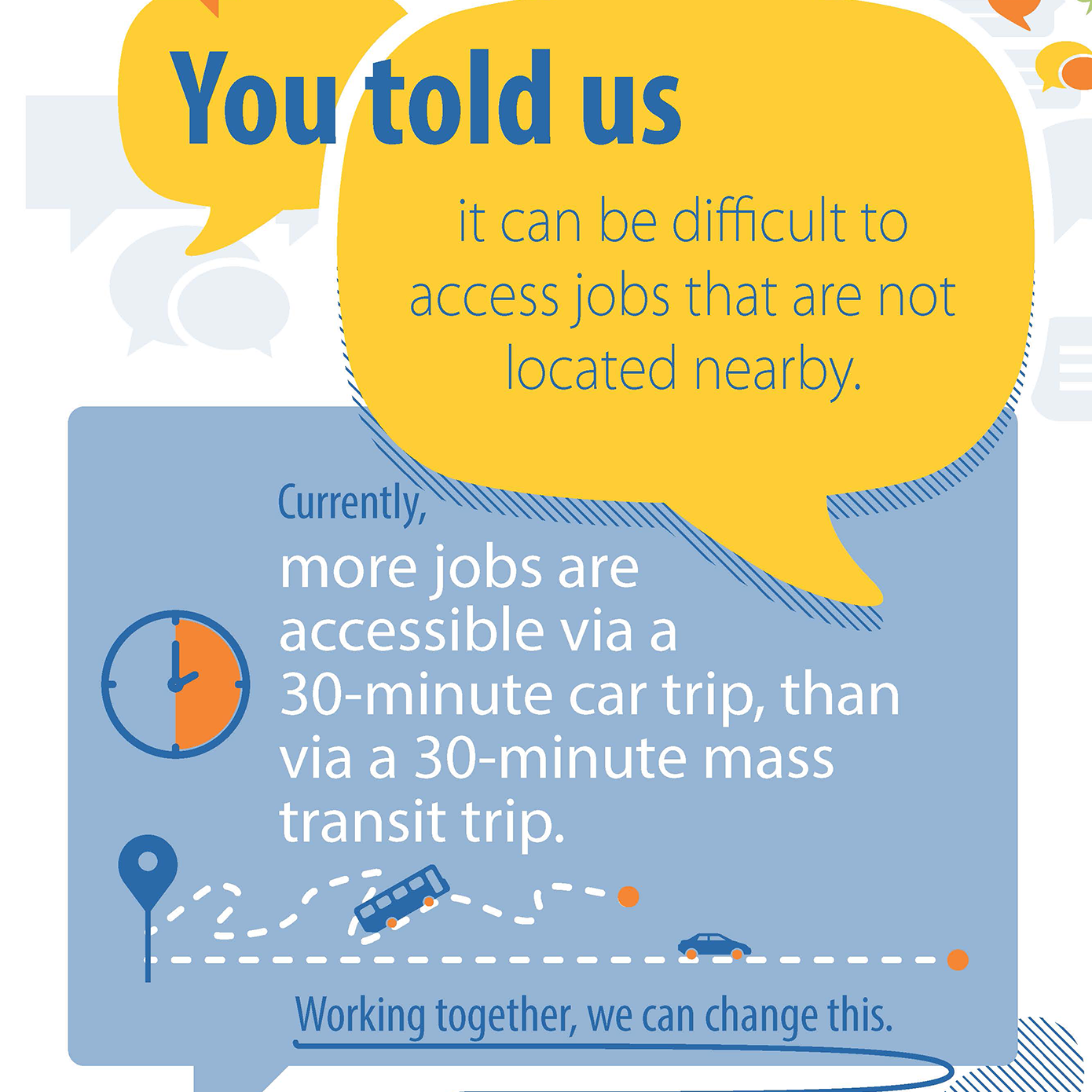
- Online Engagement – During each engagement phase a collection of online engagement opportunities were made available which coincide with each major community workshop. Materials at in-person workshops were made available online such as exercises, maps, and surveys. This included online engagement activities such as the Planning for Equity, Housing for All, "What can we Do?", and the Make a Map tool.
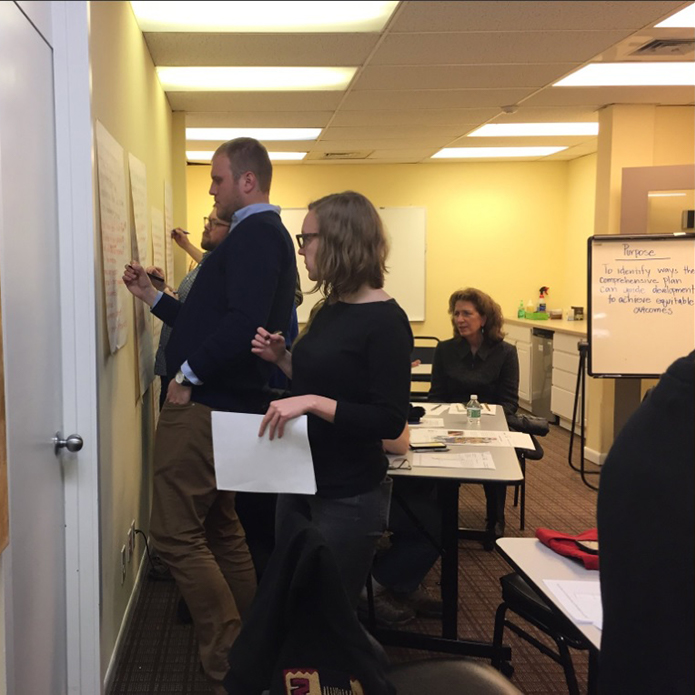
- Meeting-in-a-Box – Meeting-in-a-Box is a civic engagement tool designed for use by community groups, neighborhood associations, or friends to gather at a convenient time and location to share their ideas. It contains a packet of materials, which were made accessible online, with directions to host the meeting and how to submit input to City staff. During subsequent phases of the process Meeting-in-a-Box was updated to reflect new questions and content that was engaged on during that period.

- Tweet with a Planner – A planner was made available during the lunch hour to interact with the public on certain topics during each phase of engagement. During each of the events, a series of engagement questions were posed by planning staff that led to a live conversation on Twitter through a series of Tweets. Participants were able to provide feedback on certain topics, and have a dialogue with community members.
City staff collected demographic information in-large convening events, on the website, and in Meeting-in-a-Box from willing-respondents who wished to provide that information to help staff provide feedback on the process to make sure the process was as inclusive as possible. Other activity tailored to each phase of the process includes graphics and interactive mapping exercises used to support the engagement process.
Internal Structure
The comprehensive planning process was guided by three formal bodies: the Steering Committee, Topical Research Teams, and CPED Long Range Planning.
The Steering Committee is comprised of eight individuals who are either elected officials or department leadership whose committees, boards/commissions, and departments are strongly correlated with long range comprehensive planning and visioning. The committee guided the planning process, reviewed draft material, and provided input into the engagement process. Steering Committee members included:
- CPED Executive Director (co-chair)
- City Coordinator (co-chair)
- Mayor
- Chair of the Zoning & Planning Committee of the City Council
- Chair of the Transportation & Public Works Committee of the City Council
- Director of Equity and Inclusion
- Director of Public Works
- Commissioner of Health
The Topical Research Teams included over 150 staff from around the Enterprise as well as interjurisdictional partners. These staff teams are organized around 15 different topics related to the built, natural, and economic environment of the city. They were responsible for providing technical expertise and experiences on applicable subject matter and policy development.
CPED Long Range Planning served as the Project Management Team for the update to the comprehensive plan. Their responsibilities included coordination with the Steering Committee, and providing technical assistance and guidance to the Topical Research Teams. In addition, the Project Management Team is responsible for the plan production, preparation of draft content for review, the facilitation of civic engagement, and incorporation of public comment.
How has engagement feedback been used and documented?
Documentation of each step of the engagement process was critical in defining the direction and priorities for Minneapolis 2040 as well as better understanding which stakeholder groups are being reached. For each event and activity, staff documented the following information:
- What was the purpose of the engagement?
- What questions or issues were identified?
- What methods were used?
- Who participated?
- What feedback was received?
- How was the feedback collected and analyzed?
- What decisions did this input influence?
The documentation of engagement shaped the content process for each successive phase of engagement. City staff collected demographic information in large convening events and on the website, from willing-respondents who wished to provide that information, in order to help staff make sure the process was as inclusive as possible. Other in-person methods were used to reach key audiences who may not be able to attend a large event, or be inclined to interact with technology. At the end of each phase, an Engagement Summary was published to provide an overview of engagement activities that were made available on the project website.
What did we hear?
At the end of each phase a summary of engagement activities and transcriptions of all written feedback was packaged together and published online at the project website. Below are the documents that were made available.
Phase Engagement Summary |
Raw DataPhase 2 Civic Engagement Raw Data Overview of Phase 2 Engagement Feedback Phase 3A Civic Engagement Raw Data |

